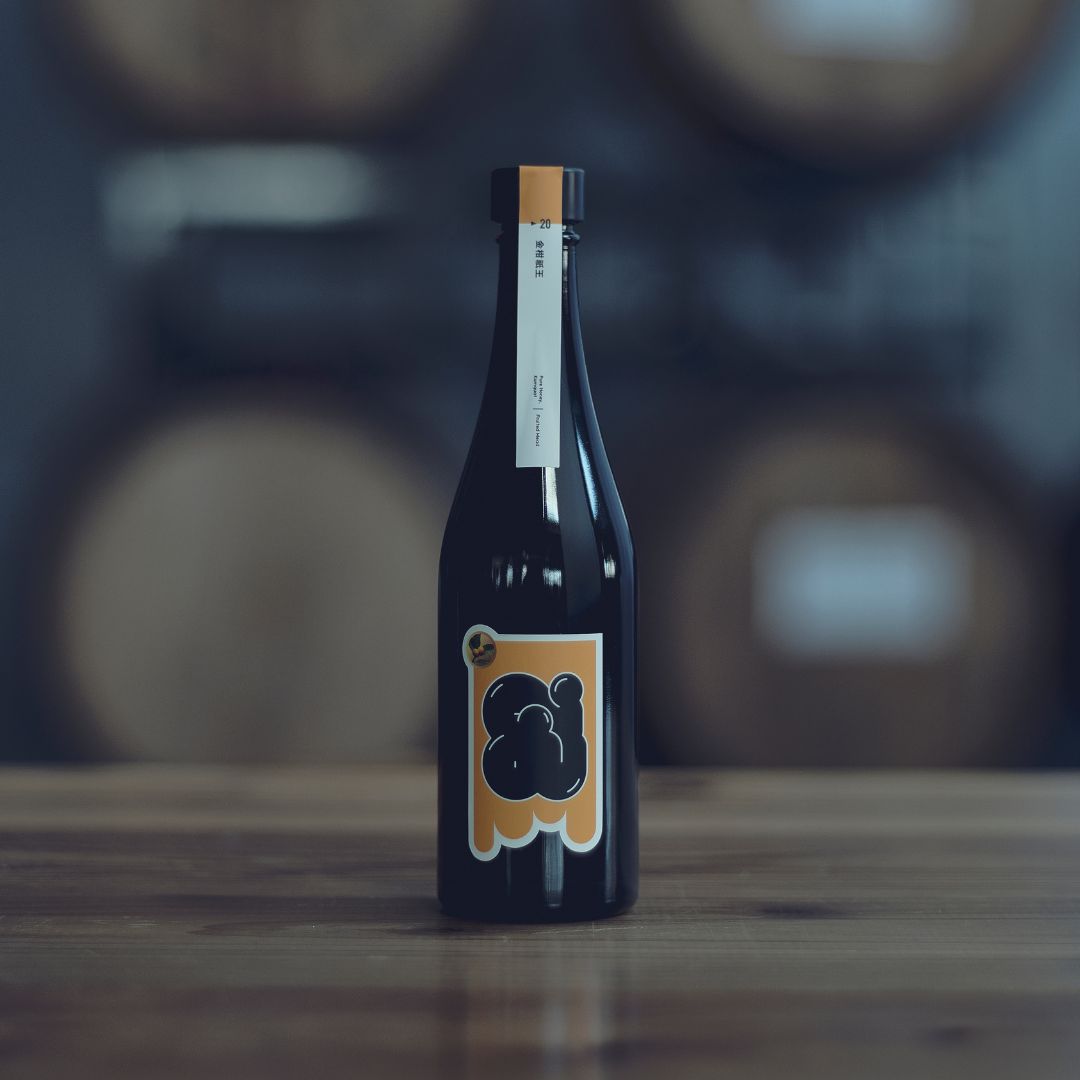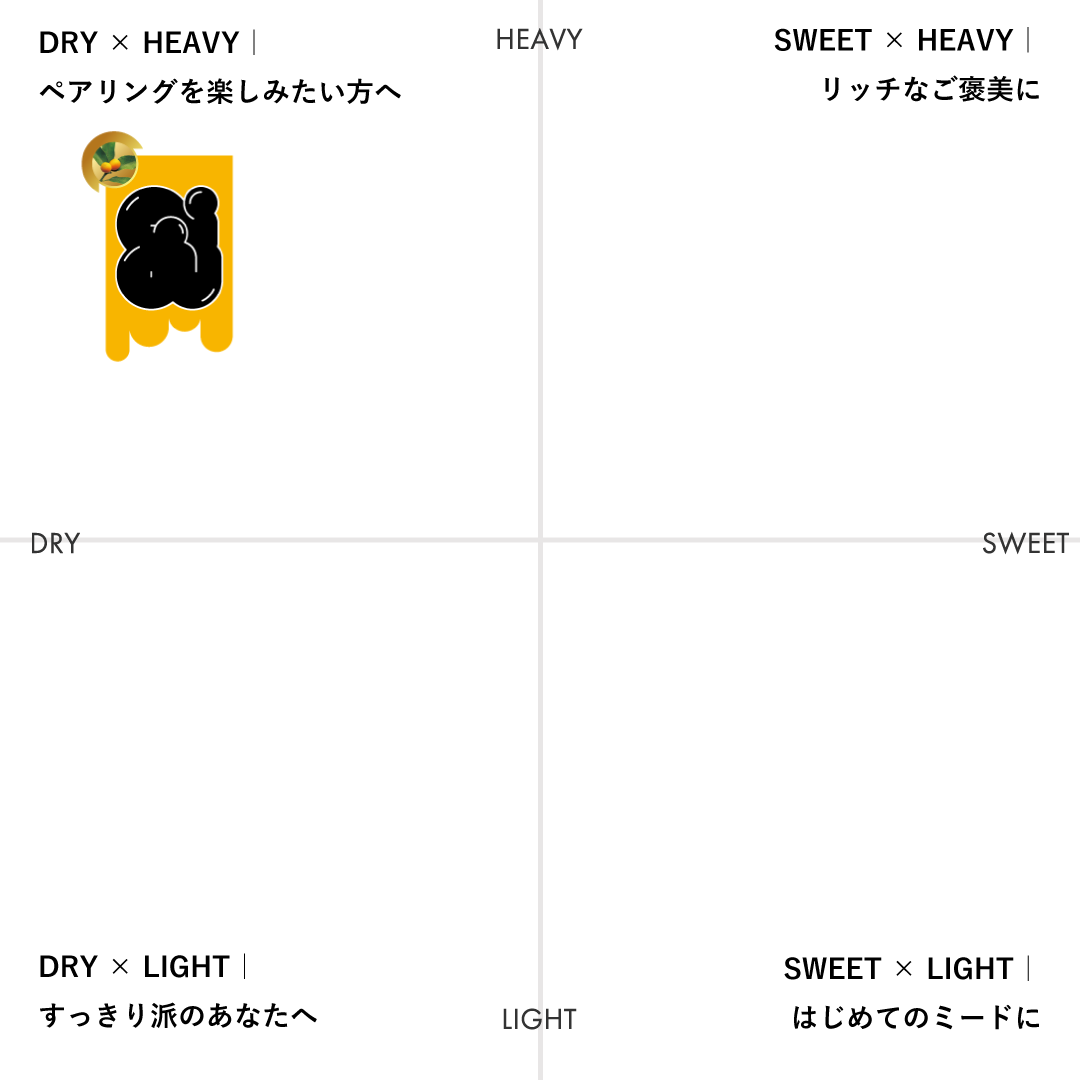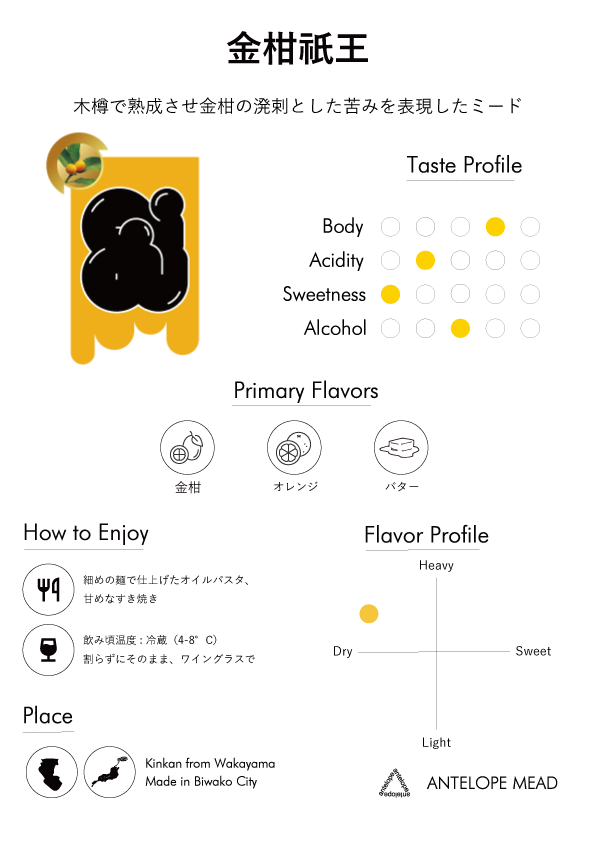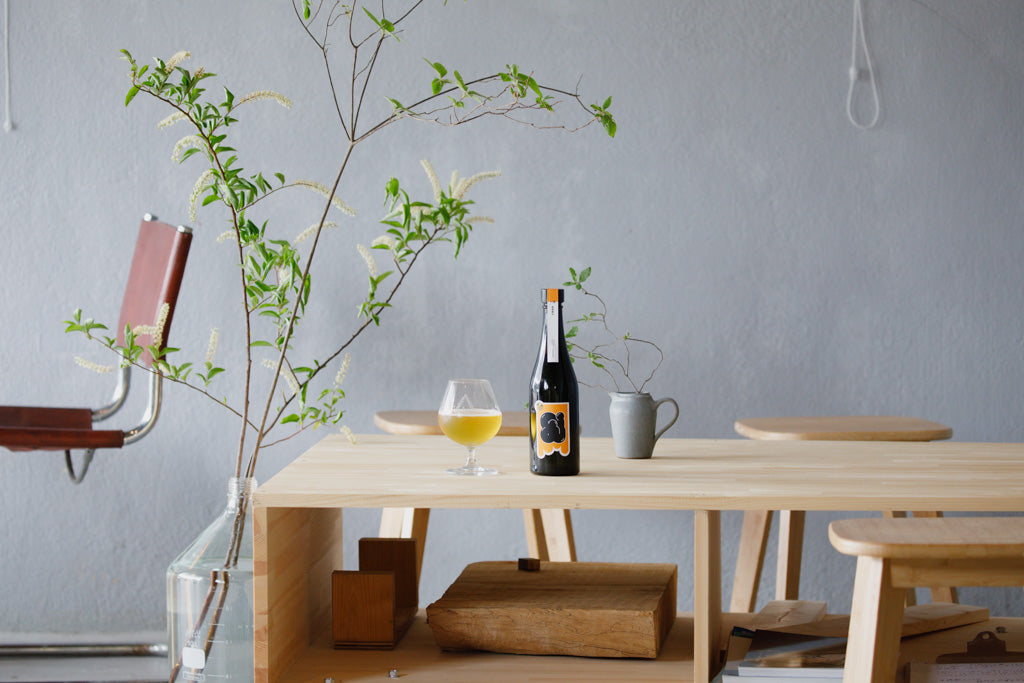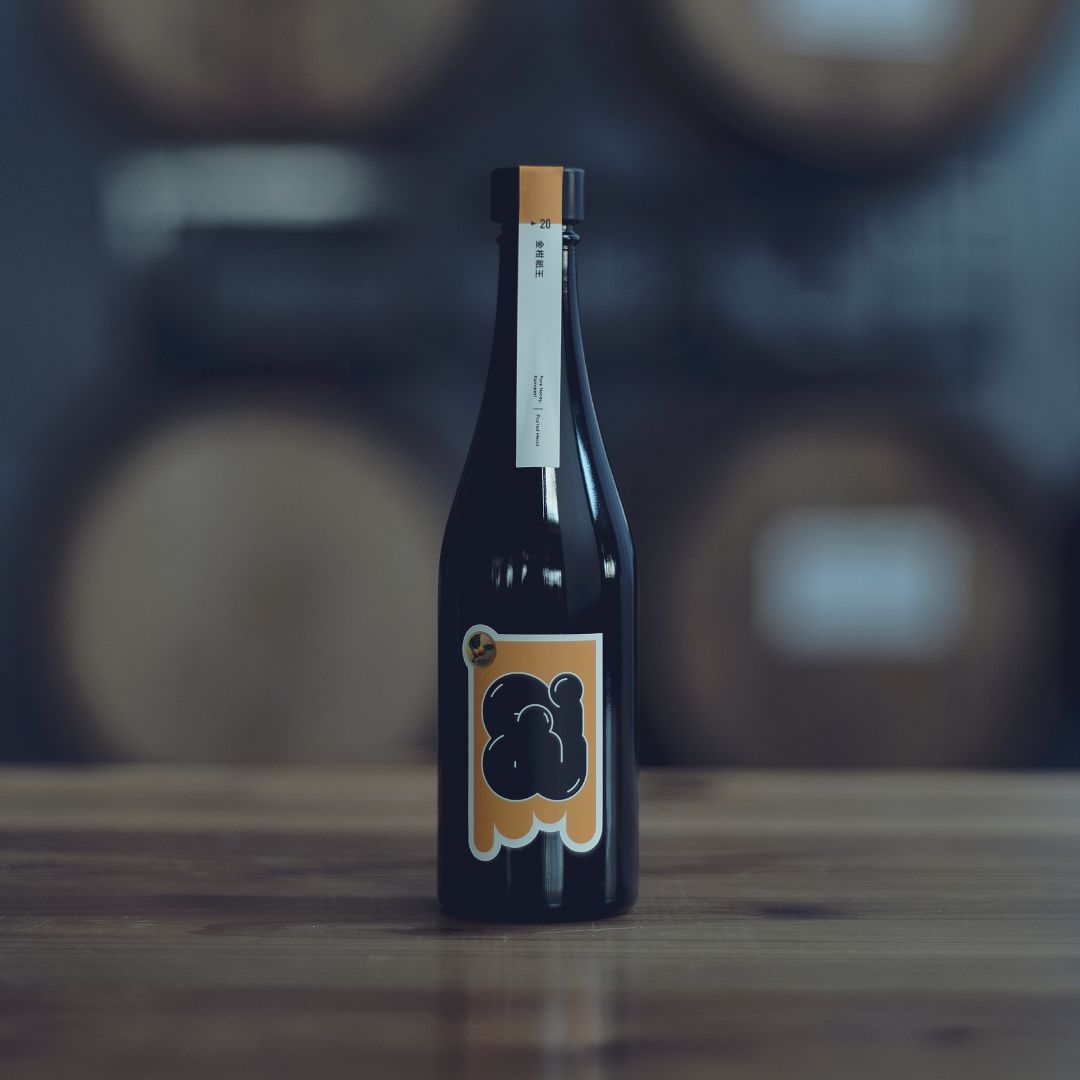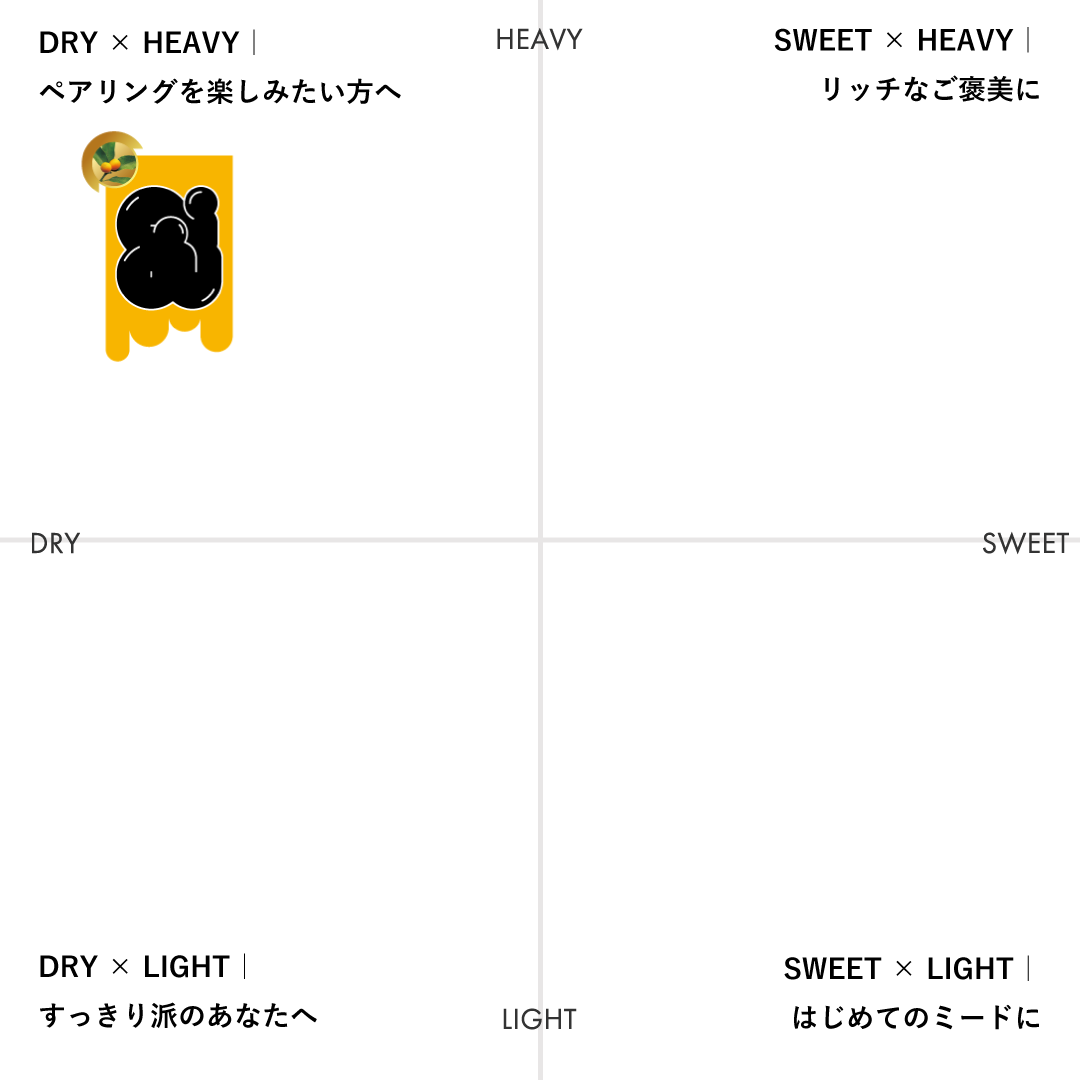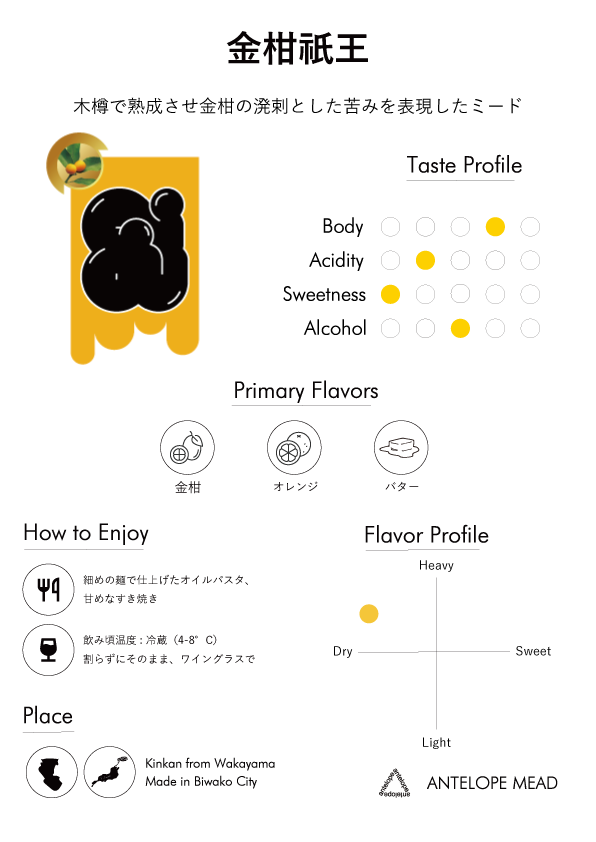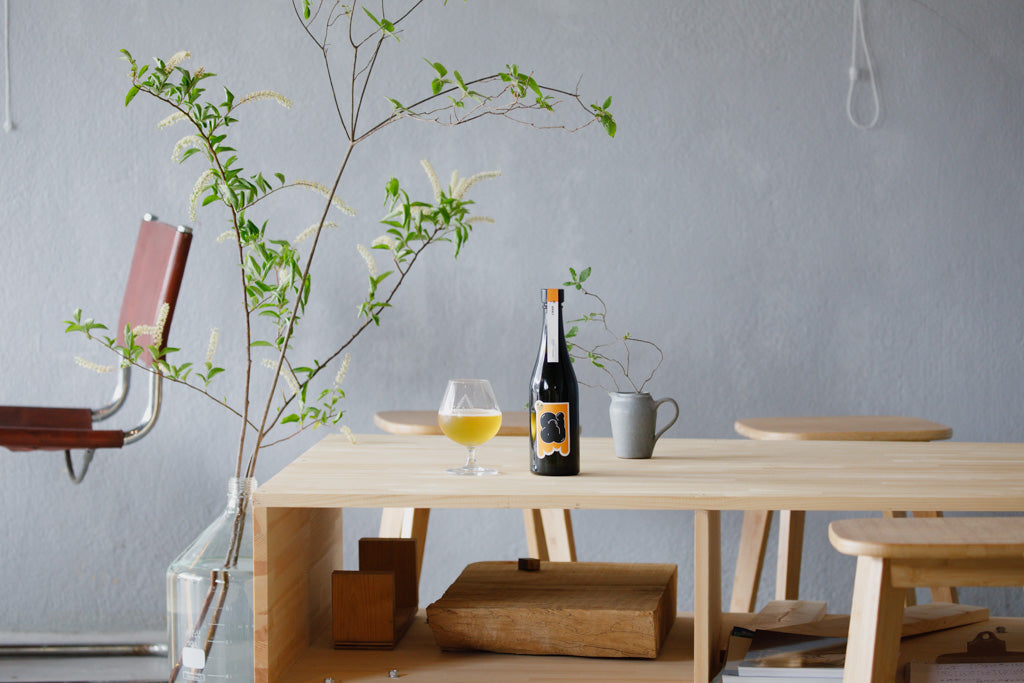Introducing Konkan Gio, which is made by storing mead carefully aged at a low temperature and kumquats from Wakayama Prefecture in barrels.
〈Wakayama→Factory〉
Kumquats are small and highly fragrant, with a sweet-sour and slightly bitter taste. I have fond memories of eating it at my grandma's house when I was little, but as an adult I don't have many opportunities to eat it. Matsukawa Farm in Kishu Minabe produces plums and kumquats with great care in Wakayama. The plump, golden fruit has a refreshing scent that is different from yuzu, and a strong, firm acidity.
Kumquats have been pickled in honey since ancient times. We decided to try soaking it in mead like we do. It's also great to line up your favorite chairs in your garden or park and have a picnic with Kumquat Gio.
〈Tasiting Note〉
The color is a transparent gold. The elegant flavors of honey-pickled kumquats, dried figs, and Earl Grey, the bitterness of kumquats, and smooth acidity make a good impression. There's a little bit of residual sugar, but it doesn't drip. It's perfect for drinking with a light snack when you're not yet hungry. I like to pair it with hummus or marinated octopus with a touch of spice, such as pink pepper, coriander seeds, or dill.
Honey: Honey from Myanmar Fruit: Kumquat (Wakayama)
Fermentation: The mead is aged in stainless steel tanks for 6 months, and the pressed kumquats are soaked in the mead for 1 month in white wine barrels. Then aged again in stainless steel tanks for 1 month.
Alcohol: 10.5%
pH: 3.92
Residual sugar: 44.6g/L
Contents: 750ml
〈Mead making〉
Giou, which is slowly aged at low temperatures, is a recipe I've been making for a long time, but I wanted to try something new to make Kumquat Giou. The natural bitterness of honey is similar to the astringency of kumquats, so we aimed to create a product that brings out the best aspects of both.
The kumquats that go well with the mead, which has been aged for a long time in tanks, are soaked in barrels to create the astringency that you would feel in orange wine. The extracted kumquats are pressed again and the juice containing more complex nuances is re-introduced. There's still a bit of butteriness from the fermentation that started again, but it matches well with the scent of kumquats. This is a bottle you'll want to enjoy as the taste changes over time. You can enjoy it either chilled or at room temperature. If you want to drink it at room temperature, we recommend a burgundy-shaped glass.
